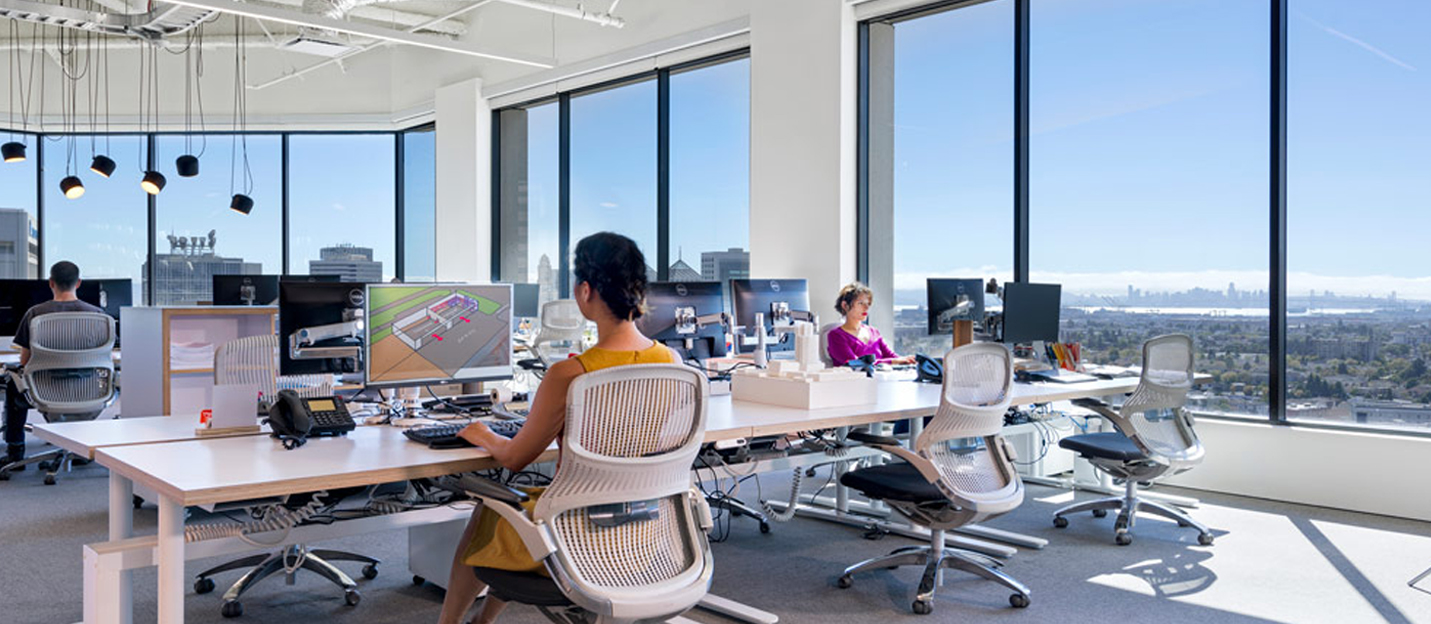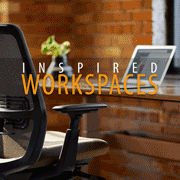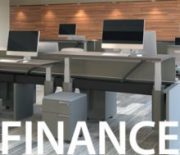A workplace reopening strategy can empower your clients and staff with wellbeing ahead of fear and angst about the continued impacts of the Coronavirus. Here are some tips of the trade to get your strategy started:
EMPOWER YOUR TEAM
Consider how employees will feel when they prepare to return to the office. Instead of mandating that everyone come back at once, consider offering the option for people to return in stages. This may not only provide the necessary social distancing, but it would also allow employees a greater sense of control over their health.
Be open to new ways of working. The longer we work from home in large numbers, the more new habits and new ways of working will begin to take shape. New and different ways to collaborate virtually may likely continue when we return to the office. Workflows and communication will improve exponentially. We should embrace these changes and let them flourish.
RECEPTION PREP
Consider visitor protocols. If no formalized visitor protocols or badge requirements exist, consider controlling access to the office via signage for phone-in entry. Depending on your visitor traffic, temporary plexiglass “sneeze guard” screens may be applicable at reception or check-in points. Rearrange or take away seating in the reception area to manage social distancing. For hygiene maintenance, remove magazines, corporate swag or pens from the reception space, and keep the hand sanitizer dispensers in plain view.
SOCIAL DISTANCING
Implement a social distancing strategy to accommodate six feet of social distancing, start with a floor plan indicating the workstations to be occupied, and determine your maximum capacity per floor or wing. Shifting or removing furnishings can be done without lessening the design of the workspace. Designers can help you creatively configure the workspace to amplify expansiveness and depth. Creating degrees of separation can be achieved by opening the layout for more access to windows with views. Utilizing cool color schemes make enclosed surfaces appear to recede and look more expansive. Resetting ceiling heights ten feet and higher can also expand the space. Where appropriate, reduce lighting intensity to render fine detail and spatial boundaries indistinct. Installing artwork or moveable screens, and wall graphics representing deep space either pictorially or textually.
WORKSTATION RE-THINK
Remove chairs or even monitors to discourage un-occupied workstation use. Seating should remain assigned until the widespread threat of virus transmission has diminished. Employees’ personal items should be removed for thorough nightly worksurface cleaning. Take them home for now
De-densify workstations. This might be a challenge in areas where desk spacing is tight, such as some open benching layouts. Plan to add higher panels/shields between benching workstations or re-orienting workstations, so employees do not face one another. In situations where existing desk spacing is less than 6 feet apart, consider using every other desk to create a buffer for each person. This could be achieved by assigning some people to working from home or temporarily locating them in other areas. It’s ideal to space employees so they don’t face each other. Consider adding partitions to all workstations to provide an additional level of comfort for your team members.
Take extra precautions to block potentially harmful viruses that can be transmitted by talking, coughing, or sneezing. It’s also preferable to avoid situations where one employee is standing while another is seated within the same 6-foot bubble.
COLLABORATION COOL DOWN
To satisfy the 10-person maximum gathering rule imposed by many states and municipalities, remove extra conference room chairs and install signage indicating the maximum number of people allowed in each conference, meeting, huddle, and focus room. Use a portion of your largest conference room for chair storage, until the need for social distancing has diminished.
Rethink dynamic and unassigned seating. Upon returning to the office, consider assigning formerly shared desks to individuals for a full day or a week, and then make sure they are disinfected before a new person uses the work setting.
BREAKOUT BREAKDOWN
Re-adjust the spacing of ancillary furniture in public areas, break out zones, town-hall spaces, and building atria. Remove additional furniture not required in the new layout. Install signage for the maximum capacity allowed by law in these areas.
Limit tech sharing. To avoid cross-contamination woes, it’s best to provide technology and accessories (such as a mouse, keyboard, or headset) to each individual. These devices are touched throughout the day and are best not shared without disinfecting between uses.
VIRTUAL TRAINING
As training remains virtual for the foreseeable future, there are a few potential uses for existing training rooms. Locate agile teams into these spaces, relocating furniture to satisfy social distancing requirements. Or repurpose these rooms to temporarily store all the chairs and ancillary furniture that has been removed from the workstation areas. Keeping this furniture on-site rather than shipping to your dealer’s storage or your warehouse will ease the transition if/once these pieces can be returned to their original locations.
HEALTHCARE LESSONS
Manufacturers are integrating new touchless features in interior design elements including touchless faucets, automated window shades, and motion-sensor or voice-activated door hardware. Consider adding these features, especially in building lobbies, reception desks, and shared common areas. Utilize materials which are smooth, easy to wipe down and hold up to frequent deep cleanings, especially in high-traffic areas.
Ramp up cleaning protocols. Employee health depends on a safe and clean work environment. Organizations should implement professional cleaning protocols not only for workstations, but for conference rooms, collaborative areas, cafes, reception desks, and other common areas at regular intervals throughout the day. Employers should provide disinfectant wipes and hand sanitizers throughout the office – and especially in shared areas. If workers maintain a clean and uncluttered desk, the professionals’ job will only be more effective.
AIR FILTRATION UPGRADES
The air we breathe is also a shared resource, so invest in air-cleaning systems to protect collaborative environments. Consider installing state-of-the-art air purification and sanitization systems. Many of these systems display real-time air quality measurements on digital screens to keep employees informed, and it will serve as a continuous disinfectant, improving air quality by reducing airborne and surface contaminants like viruses, bacteria, germs, VOCs, smoke, and other allergens.
Our team is here to help your business navigate back to normal as quickly as possible. If you have any questions or needs please give us a call. Our designers can help you with reconfiguration, distancing strategy and overflow issues. Our showroom can affordably supply any additional items you may require. If you decide to downsize, we can assist with that too. Your success is our business.



